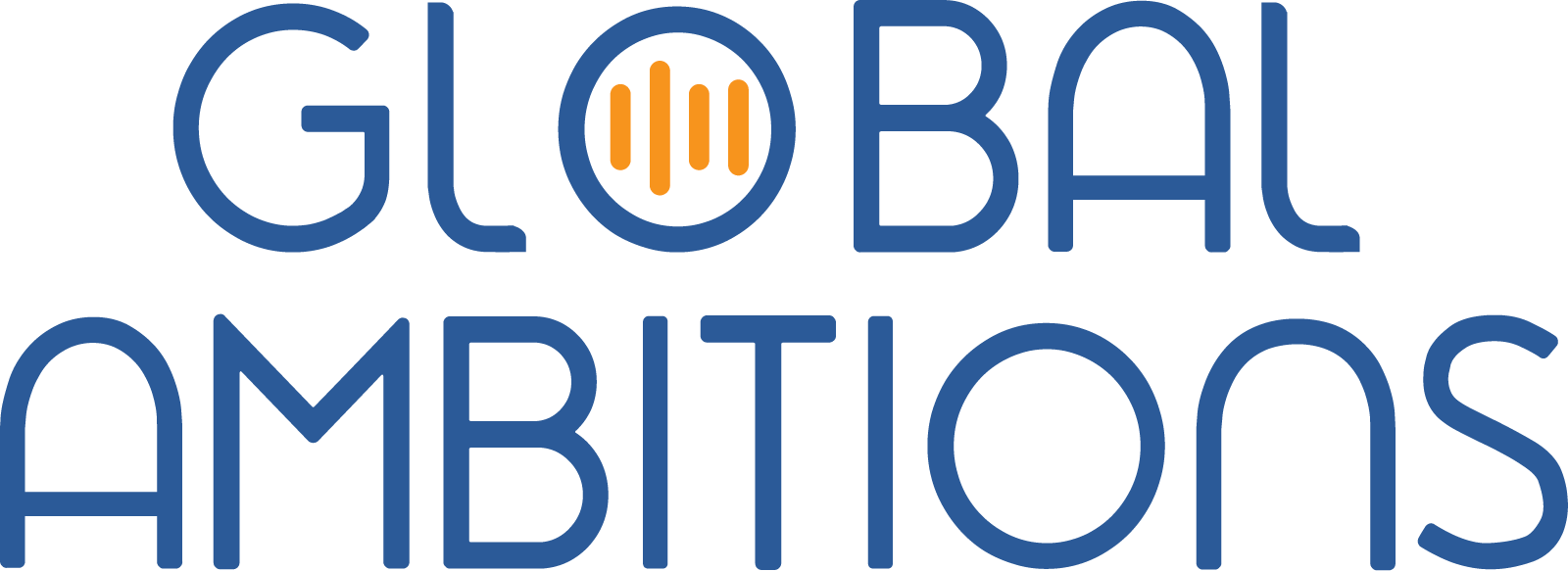With Karen Combe, VP of Localization at PTC (Retired)
Below is a complete transcript of this episode
Antoine Rey
Hi, I’m Antoine Rey, and I will be your host today for this Global Ambition podcast episode. My guest today is Karen Combe, who is recently retired as a V.P. of localization at PTC, and she is now running Combe Consulting. Today, the topic will be talking about globalization strategy on the client-side. Karen, welcome to the program.
Karen Combe
Thank you, Antoine. I’m happy to be here.
Antoine Rey
Great. Do you want to maybe start by talking to us about your experience? And I presume this would be coming from your experience at PTC, about how you advise localization managers and directors that are listening to this podcast on how they can transition from being a language support group to becoming a strategic function for the organization?
Karen Combe
Well, one thing I could talk about sort of leading up to that is my experience on the vendor side and how I had to essentially relearn localization when I went to the buyer side. So I worked for 10 years on the vendor side in Boulder, Colorado. Very small company. When I started, I was the 12th employee. I did a lot of different jobs over those 10 years, including managing production. I was the general manager. I was a senior vice president of sales and marketing, a lot of different jobs. And I was pretty sure that I knew all about localization by the time I left there.
In fact, I was the person that often went to see prospects, you know, perhaps as part of a group and talked to some fairly senior people at those prospects about how to frame their processes to best enable localization. So clearly, I felt competent to tell people how to organize their localization on the buyer side. And then when I actually got recruited and went to PTC, I found that I had to really learn how to make localization work.
And that’s partly because suddenly localization was not the most important thing that was going on in the company. Big shock. So there was a transition from a complete focus on localization to just being in large part, a little cog in the wheel.
Antoine Rey
Mm-Hmm.
Karen Combe
And not necessarily viewed as a very important cog. So I inherited a team that was essentially a translation group. So we had a lot of translators like a lot of companies did in the 90s when PTC wanted to establish their global markets. They understood they needed to translate, and so they hired a bunch of translators. So I had five Germans, five Japanese translators. Those were the biggest markets. And this was strange to me that anybody would actually have translators in-house rather than asking a vendor to do that. So, you know, I did come to understand that there was great value in having people in-house who understood the products and could translate them, but there was no engineering capacity.
The project management capacity was very low. There was no testing of the products being done. So there was a big transition to make… to reframe the organization and more importantly, to go back to your original question to learn how to function effectively in that environment.
Antoine Rey
And this is then trying to move away from being just a language support group that your internal stakeholders throw over some piece of content for translation to becoming what I would classify as a revenue enabler for the organization. Is that right?
Karen Combe
Yeah, absolutely. And you know, it’s not always easy to make that connection directly, but for sure, the first thing you need is access to the information about revenue, right? And for example, at PTC, we didn’t sell products by language. If you bought the products, you bought all languages.
Antoine Rey
Mm-Hmm.
Karen Combe
And so trying to determine what revenue belonged to which language was something that took a while to figure out and required collaboration with people in finance and sort of experts on their data mining capability to figure out how to attribute those revenues. And then establishing a fairly robust process to look at revenues versus costs per language and which cost you look at. Do you look at just localization costs? But what about marketing? What about the other functions that have to go along with a localized product such as tech support? What about training?
You know, a lot of different groups are involved, so gradually, I think really treating localization in a similar way to how executives treat the rest of the company. In other words, by looking at localization as a business and what contribution that business was making to the company. So very carefully looking at the value that localization brought to the company as a business, as a revenue generator, and not as a cost center.
So this was a fairly long process to gradually build confidence in the organization in what we were doing in localization, as well as trying to optimize our operation so that we consistently had very high quality localized products and didn’t have any quality issues coming back from customers. And that, you know, that took a few years.
Antoine Rey
Something that resonates with me that you just mentioned there, you had to get close to finance. You know, not only I’m sure, for funding the operational side of localization at PTC, but also I presume when you’re moving from that just operational to a strategic position in your organization, you need to be able to produce the data, the numbers that are going to justify your course of action. And one person that’s going to be important in your sphere of influence, and I think I’ve said that to a lot of our clients, is finance. But that’s not the only person. So did you have to build that sphere of influence at the executive level and that global mindset from a company perspective to get to where you wanted to be treated, as a revenue enabler for the company?
Karen Combe
Yeah, absolutely. And again, that confidence is built over time. I was very fortunate that at PTC even when I got there, over 50 percent of the revenues of the company were generated from non-English speaking countries. And so that was something that I was very happy to be able to point out to anybody at any time. And so that was sort of, you know, the first step on the way.
But you had to look for opportunities to present information to people. And first of all, of course, to your management, but also to people further up the chain. And I was very fortunate that since I was at PCC for quite a while, some of the people who started out as leading product management for one product eventually were promoted. And in fact, one of those people is now the CEO. So I knew people over a very long period of time and had the opportunity to interact with them at different levels along the way and gain their trust. So they knew that we actually knew what we were talking about.
But being able to present data and being able to present the business case for localization was very important. One of the big steps that we took was to get the strategy group, because there eventually was a strategy group as part of the executive function in the company, to get them on board with the idea of looking at penetrating markets.
Not so much by GEOs, which is the way a lot of companies tend to think of markets. For example, southern Europe is a geo. Instead of being a language center for French, Italian, Spanish, whatever, to get them to think about languages and to be able to contribute data to them about revenues per language. Because we looked at that, we found that data and looked at it, and compared that to cost. So being able to get their organization used to the idea of thinking about languages was a big, important step.
They started to think of us as a resource for data to support whatever strategies that they were thinking about, for example. And sometimes this was not a lot more than, you know, being able to contribute cost, but thinking about costs again across the organization, which they tended not to do. Or the support of a new market or a new language.
And so, for example, at one point, unfortunately, in late 2008, the company decided to go sort of full-on into Russia because, at that time, oil was $150 a barrel and prospects were very good. So there was a big cross-functional team led by one of the executives with many workstreams about what needed to be done to set up all operations in Russia, and we were part of that. So we were considered to be a critical part of that, and that was sort of an important recognition.
Antoine Rey
That’s like a massive recognition. I would say you might not be driving the strategic decision, but you are at the table of the conversations that are happening and bringing in input as to how and why that should be done for a given market. And that go-to-market strategy becomes quite important in that case.
The last thing I wanted to talk about on this podcast today with you, Karen, and thanks for your input on that is around the globalization strategy playbook that you recently contributed to with a number of esteemed colleagues from the industry. I think there were 12 of you on this, and I know that’s publicly available on GitHub if I’m not mistaken.
Can you talk to us for a few minutes about that?
Karen Combe
Well, yes, you know… I can no longer remember exactly how it started, but I think, yes, I do remember how it started. It was an offshoot of another group that was a subset of the Guild Leaders Forum, which is a bunch of leaders of localization and various companies around the world. Mostly IT companies, people who have met and interacted at conferences in various places over the years, who currently meet every other week for an hour. And just talk about on the buyer side only how best to manage localization and sharing information about how best to do that. We never share information about vendor costs or anything like that. We just talk about how to meet the kind of challenges that I had to meet. Moving into the buyer side and trying to be effective there.
And so there was a subset of that group that worked on metrics and what metrics we could compare and benchmark ourselves against and gathering those metrics. And gradually that built up over time to have more and more companies participate and get to be more statistically valid. That information, of course, is not public at all.
But as an offshoot of that, and I think it was Lyena Solomon who started talking about, well, what we need to think about strategy and how to manage localization from a strategic point of view. Something that we were all kind of doing and trying to do, but had not articulated the best practices for. And so again, I don’t know who exactly decided we should write a book. It started with a meeting.
Somebody went to a meeting and said, we should write this down. This would be really good. And so when I first got involved, I in fact thought I was just going to go participate in a meeting to discuss this. And then I got assigned the chapter and actually wrote a little part of the book myself, as did we all 12 of us wrote parts of it. And by some miracle through volunteer editing, got it to sound more or less like it was written, you know, not collectively and readable.
And now it’s published and it’s free to anybody in the world who wants to go and look at it. And of course, we’re interested in getting feedback on it, and we hope that it will help other people who are starting or in the journey that a lot of us have made to make it easier for them.
Antoine Rey
OK, so this is very much addressed to all the localization managers, localization directors and VPs out there that are working in a corporate environment and want to make a difference from a strategic perspective in their own organization so that their organization looks at localization as a revenue function.
Karen Combe
Well, also, you know, it’s something that could be useful to people on the vendor side to understand better what it is that we have to try to do on our side and how we’re trying to do that and perhaps providing a better level of support. I mean, not everybody has a big department. I had a big department. I had a lot of people working on all phases. I had QA, I even had a few translators, project managers and I had an engineering function. Not everybody has that.
A lot of people start or even go along with very heavy reliance on their vendors. And so a lot of the kind of information or technology that they need comes from the vendor side, from their LSPs. And so their LSPs have an opportunity to be enormously helpful, particularly since their vendors deal with many different companies. And they should be able to transfer the knowledge not any proprietary knowledge, but the general knowledge that they gain from their customers to their other customers to help them to be able to do things better. So I think it’s a book that can benefit everybody.
Antoine Rey
I’ve looked at some of the chapters already myself and will make sure to put the link where people can access it on globalambitions.net.
Karen Combe
That would be great.
Antoine Rey
Karen, I’d like to thank you for your participation. It was very enjoyable to prepare for this and have a conversation with you today. Thank you very much.
Karen Combe
Thank you it was fun.





